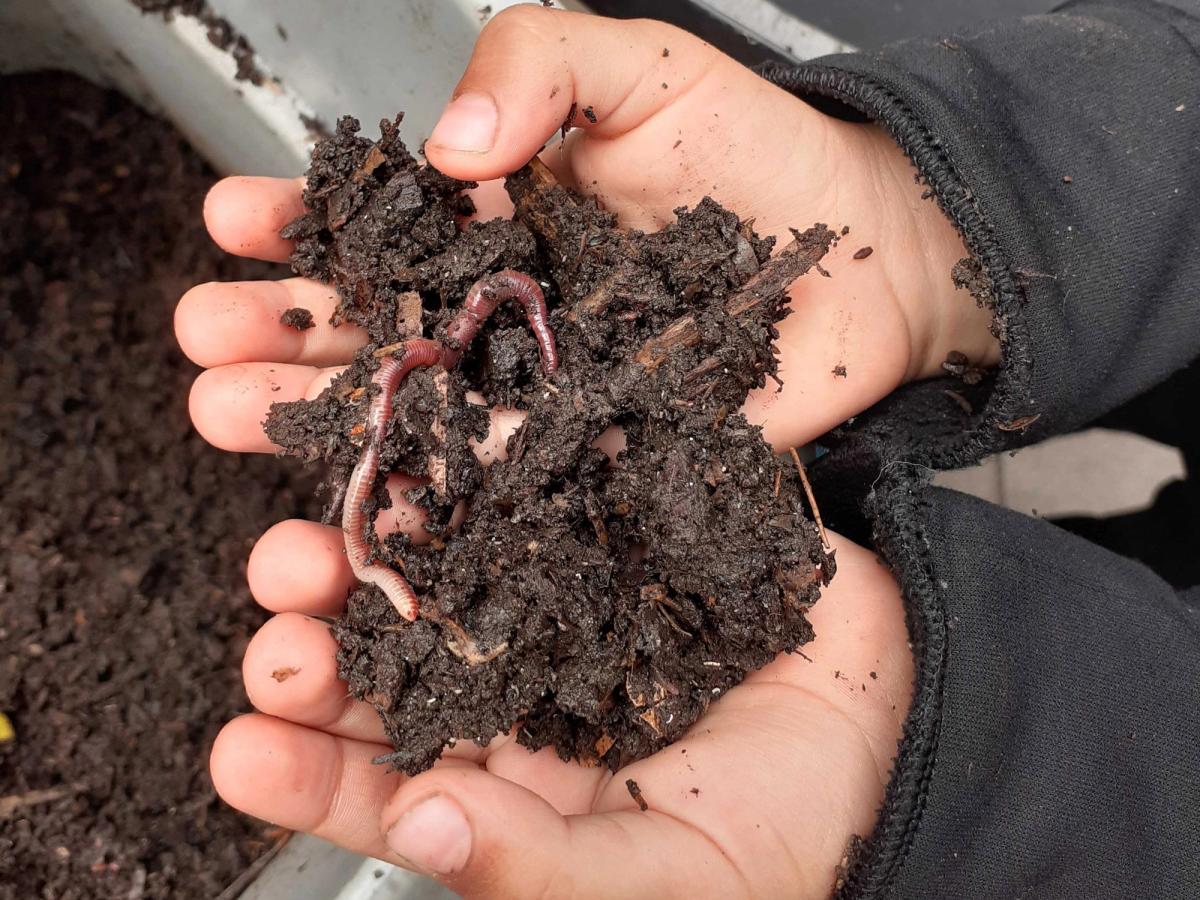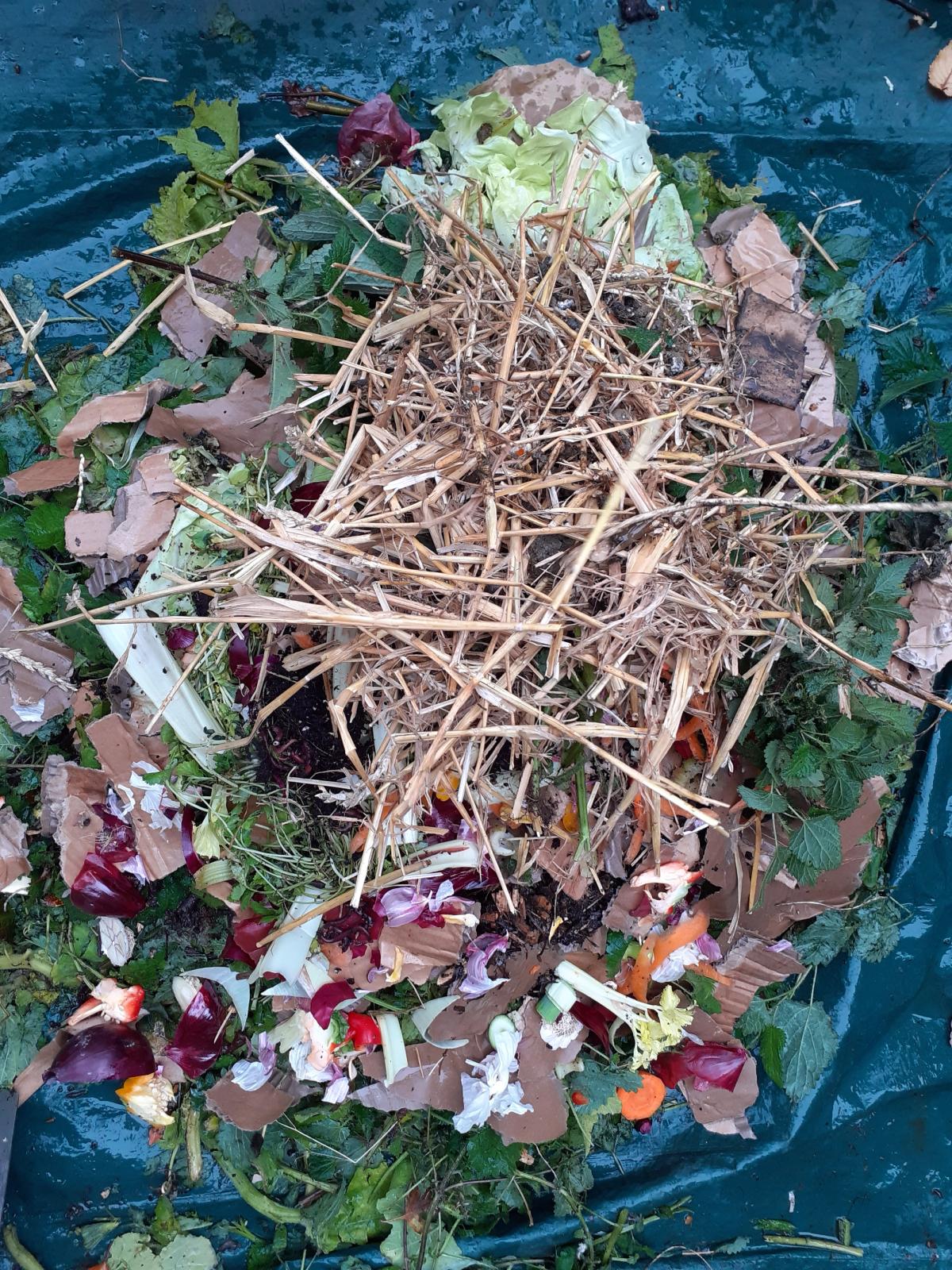How to Compost

Getting started
Learning how to compost is a bit like learning to cook! Like any new skill, it takes a bit of research and practice, but it is not difficult once you get started, and can quickly become an enjoyable part of your routine.
The process itself is a bit like cooking too! You add your ingredients to your composter, water if necessary, and give it a mix. Check back occasionally, if dry add more water, and stir. After a few months the end result is your very own beautiful, crumbly, dark brown compost. It feels almost magical turning materials that are usually seen as ‘waste’ into something so valuable to our soil.
How does composting work?
Composting is an amazing process that happens all the time in nature. It is how nature recycles everything that has once lived, and turns it back into new living things.
When plants and animals die and fall to the ground, they are broken down by composting-microbes (bacteria) and other soil life, such as worms, fungi, centipedes, nemotodes and woodlice.
The nutrients from these plants and animals are then used again by new plants and animals.
When we compost at home, we are simply creating an environment where this natural process can happen in a way that is convenient for us!
How to compost?
Whatever method or bin we choose, it is the bacteria, fungi, worms and other soil-life that turn our waste into beautiful compost. Our job to look after the soil-life; it is a bit like having a pet that we need to keep happy and well fed.
There are FOUR key things that it needs to be able to thrive:
- Carbon
- Nitrogen
- Oxygen
- Water
Carbon and Nitrogen (Browns and Greens)
Carbon and nitrogen are found in all living things, and therefore it is in all the dead stuff (kitchen scraps and garden materials) that we compost.
To make things simple, we think of two main groups of materials, some that contain more carbon, which we call ‘browns’, and some that contain more nitrogen, which we call ‘greens’.
A good compost pile will have a mix of these materials, chopped roughly, and mixed together.
‘Browns’ – this is dead, dried out stuff. Autumn leaves, woodchip, cardboard, shredded paper, dried twiggy plant material, sawdust, straw. The harder, twiggy browns add air pockets as well as carbon. Getting enough of these in your mix will set you well on the way to a great result.
‘Greens’ – these are materials that are fresher and contain more water. Kitchen scraps, grass clippings, green garden cuttings, coffee grounds, weeds, chicken or farm manure. These add nitrogen and moisture and break down quickly.
Top tip:
If you’re not sure whether something would be classed as a ‘green’ or ‘brown’ think about what would happen to them if you left them on your kitchen worktop for a couple of weeks. If they are a ‘green’ they would be breaking down, maybe looking soggy, or starting to smell. Whereas ‘brown’ materials would look exactly the same as when you left them.
Aim for about 40% greens and 60%browns. For every bucket or wheelbarrow of greens make sure you add more browns.
Too many greens can lead to a stinky, slimy compost heap, and too many browns can lead to a dry heap that takes a long time to break down. Getting a good mix is the key to producing beautiful compost quickly and without smells.

Oxygen
Just like humans, the microbes and other soil-life,need oxygen to survive. There are two ways of making sure our compost has enough oxygen.
The first is adding enough twiggy and hard ‘browns’. When woodchip, twiggy bits and dried plant stems are added to a compost pile they create little gaps between the green, wetter materials. These pockets of air stop our compost from becoming dense and slimy.
The second way is to sometimes stir or turn our compost to break it up and to add new air into the pile. This can be done with a garden fork, orcompost aerator, or sometimes it is easier to remove the contents of a bin completely and put them back in.
Water
Soil-life, like us, needs water to survive. Microbes also need water so that they can move around on the compost materials. Without enough water, the composting process will slow down.
When starting a compost pile it is important to make sure enough water is added. It might be that the green materials add in enough moisture, but it can be a good idea to water any very dry brown materials such as woodchip or cardboard, or leave them in the rain before adding. Keeping your compost covered will stop it drying out.
Check back on the compost regularly to see if it needs more water adding. Do the ‘squeeze test’ to see if your compost materials are damp enough. Take a handful of compost and squeeze it. It should feel like a wrung out sponge, and hold together in a clump, with one or two drops coming out. If it feels too dry then give it a good water.

How to create beautiful compost
There are some simple things to bear in mind if you want to create beautiful compost, whatever method you choose.
Successful composting comes down to being thoughtful about the materials you have and how you layer or mix them up. Making sure you add soft wet materials with plenty of tougher browns will allow airflow.
The smaller you chop materials before you compost them, the quicker they will break down. Some people are keen to produce compost quickly, so the work of chopping pays off. Others are happier with a slower result, so a rough shop of larger materials will do.
Tips for composting if you are differently abled
Composting, like gardening, can be a great activity that for both body and mind. But the lifting and turning can be tiring, painful, or simply not possible, for many people. Here are a few suggestions for how the process can be adjusted.
Some methods require less physical work – such as cold, slow composting where there is less need for turning of materials. Adding in plenty of twiggy browns as you go will keep the bin aerated.
If you are able to turn compost, but find it tiring, then a compost aerator may be a good investment, as it is easier than trying to turn materials with a garden fork.
An alternative way of aerating a pile can be to insert drainpipes, drilled with multiple holes, into the materials. This helps to keep extra air in the pile and reduces the need to turning.
Wormeries are small and easy to manage, the only ‘brown’ they need is shredded paper or card. They can be kept indoors, require no turning,and can be an interesting hobby.
Choosing the composting method that is best for you
Think about your space, your budget, the amount of materials you produce (browns and greens), and how much work you want to put in.
Find somewhere to compost your foodscraps.
If you can’t compost your own kitchen scraps, but don’t want to just throw them away, try looking on Sharewaste.com or Makesoil.com to find a neighbour or local community composting site.
[Information written by The Compost Connection]